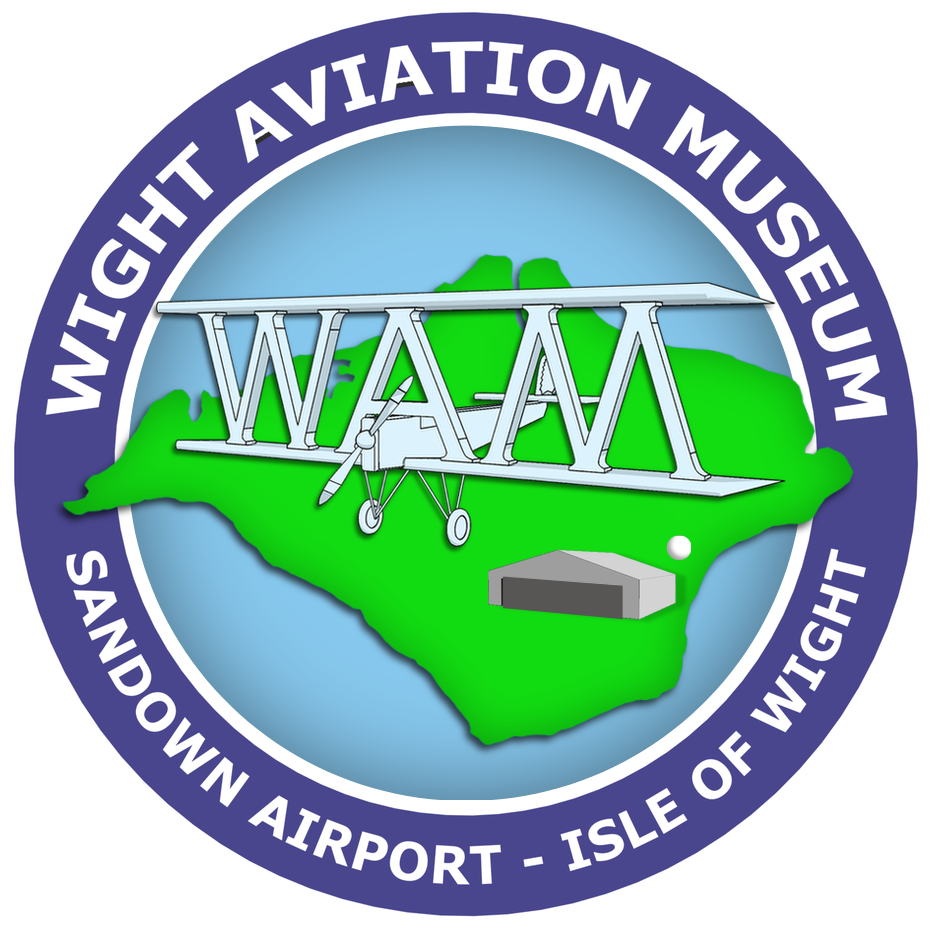Bringing the CC7 back to the Isle of Wight..
Through the combination of public donations to date and a generous loan, the Wight Aviation Museum have been able to secure the Britten-Norman CC7 Cushioncraft XX102, the second to the last built [C/N 005] and bring it back to the Island, for restoration and to display as part of our museum collection.
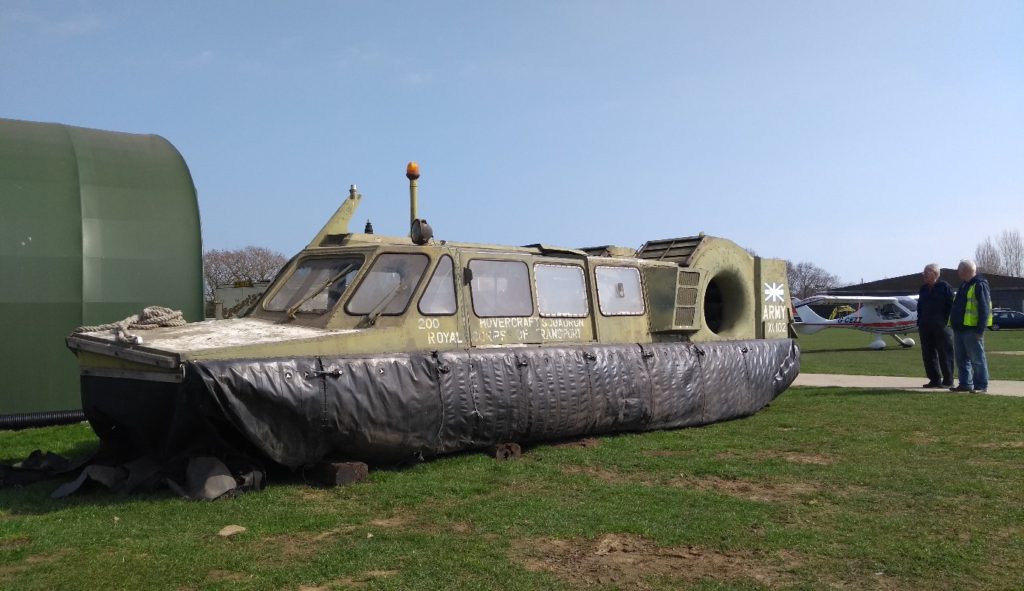
The CC7 XX102 was built on the Isle of Wight in 1969 as part of an ongoing program to develop hovercraft technology.
The XX102 was in service with the 200 Hovercraft Squadron of Royal Corps of Transport from the late 1960’s and was in use around the World before being transferred to the Royal Navy Hovercraft Trials Unit in 1972, remaining in military service until the early 1980’s.
The CC7 arrives at SandownAirport..
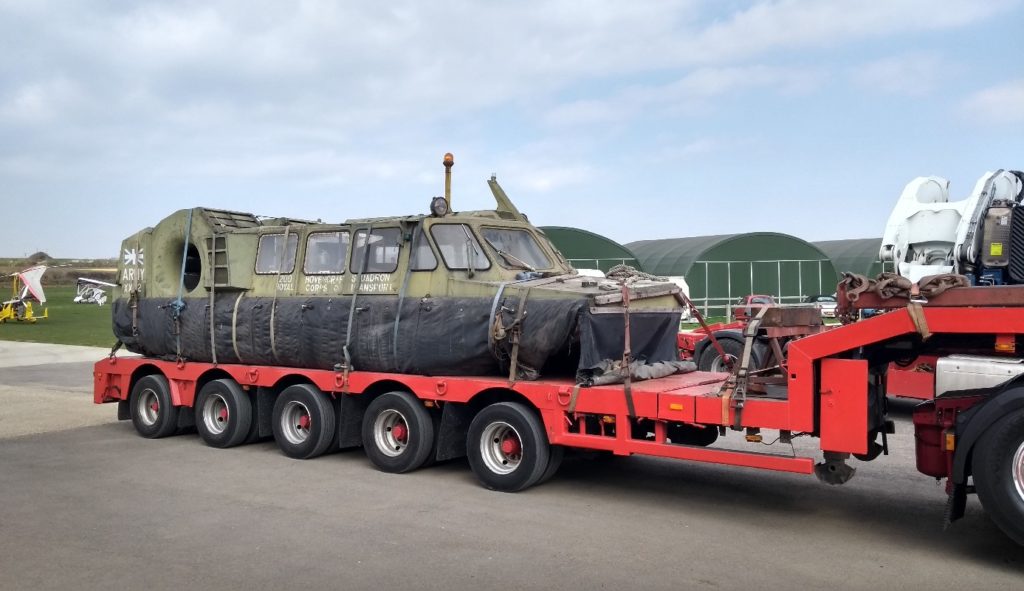
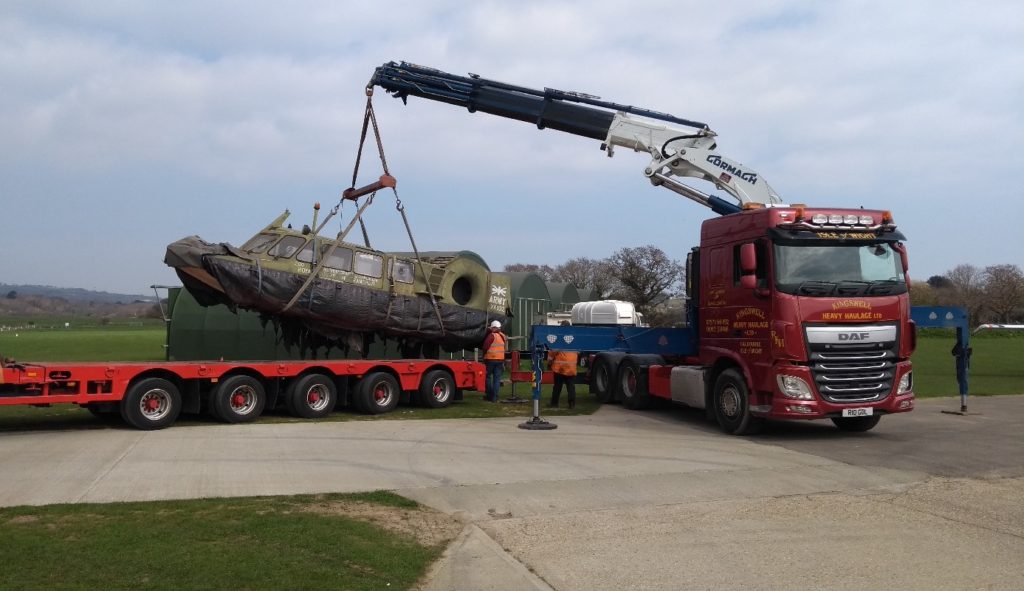
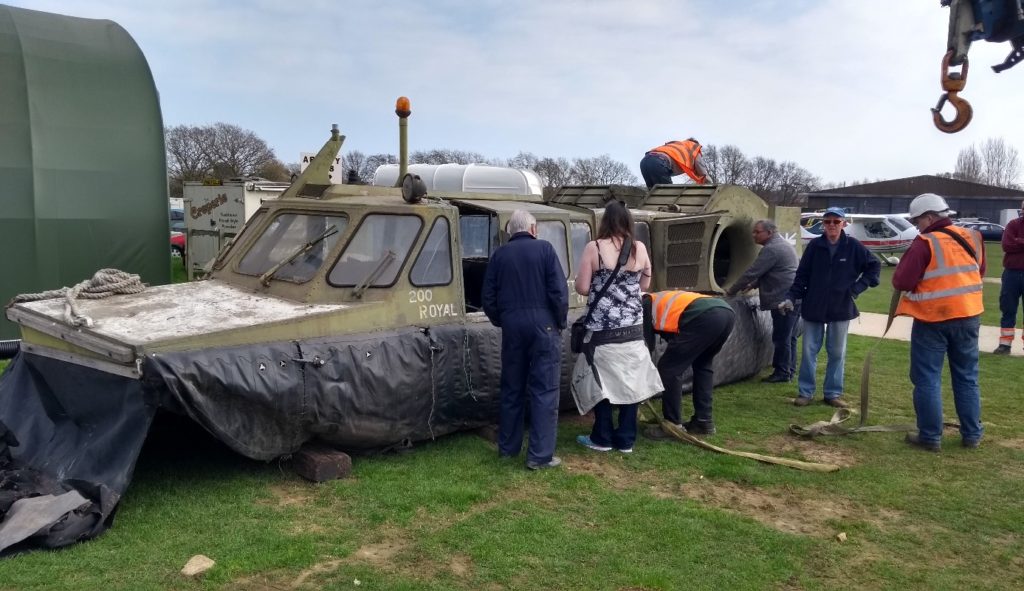
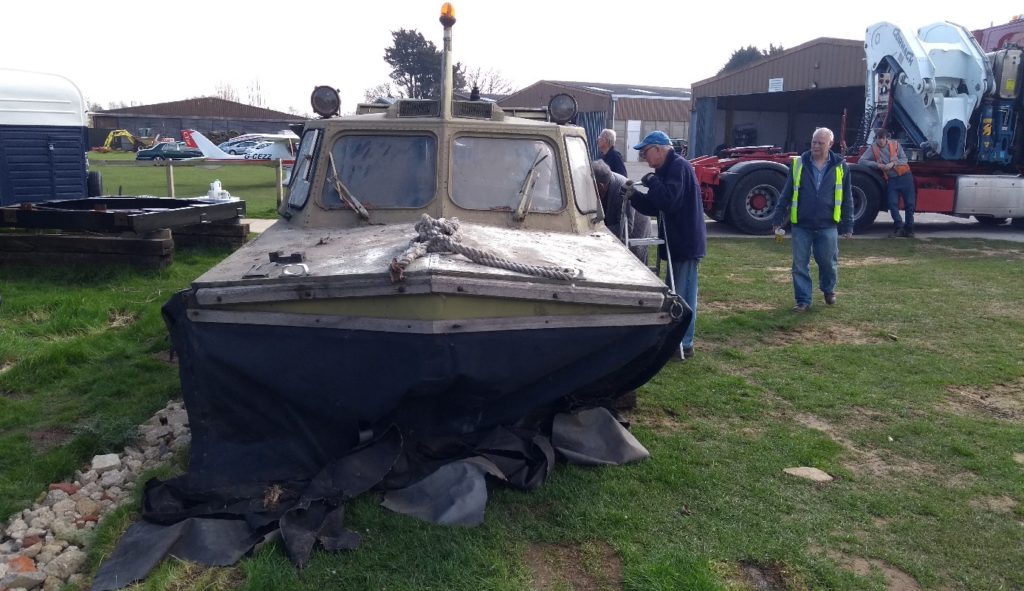
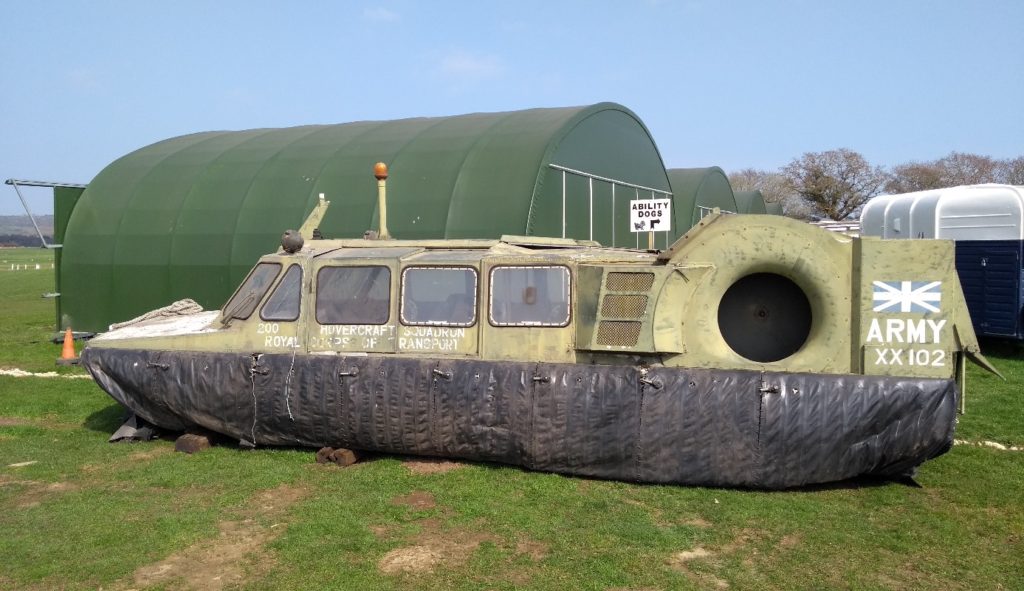
With thanks to our supporters..
We are most grateful to our ardent supporters that have already raised a fantastic £1100 to date, though direct donations, including gift aid, to finance this project.
The amount raised so far has been used to cover the cost of transport from Lincolnshire to the ferry. This was a 500 mile road trip from a location near to RAF Coningsby. We have secured through help from another supporting heritage organisation, a free ferry crossing for her.
We are also very grateful to people that worked on this craft for contacting us and offering to help us with restoration. We have also had support from the Hovercraft Museum, who has a sister craft CC7 in their museum at Lee on Solent and Warwick Jacobs, the founding father of the museum, we have really appreciated their help and advice.
We will have a dedicated WAM Cushioncraft team on the ground at Sandown Airport on the Island, including our hovercraft guru Nikki Wilkes, who has a vast knowledge and contacts we can tap into to support this project.
About the CC7..
In 1960 Britten-Norman Ltd, based at their Duver works at St Helens, began fabrication of their new “Cushioncraft” vehicles, their name for an air-cushion hovercraft vehicle.
The Cushioncrafts were initially used to study the potential of this type of vehicle for the carriage of bananas from plantations in the Southern Cameroons, work which later expanded into many different countries.
These investigations revealed the possibility of a break-through in transportation by the use of air cushion vehicles, which could potentially accelerate the pace of development in territories where roads are nonexistent and costly to build, especially where rivers are seasonally un-navigable.
Cushioncraft was reconstituted as a separate company in 1967 to permit British Hovercraft Corporation (BHC) to take a minority share holding and it revived the name under which Britten-Norman’s initial ACV endeavours were launched.
In 1971, Britten-Norman encountered financial problems, and the Cushioncraft company was sold to BHC in 1972.
The CC7 XX102 was built under licence by BHC at their works in East Cowes in 1969, during the transition of the business from Britten Norman Ltd.
Key stats..
The CC7 was built in aluminium with inflatable side decks, first taking to the water in early 1967 as part of an ongoing program to develop bigger and better hovercraft.
The CC7 was the first Cushioncraft to use a gas turbine engine ( previous C class versions have traditional piston engines).
- 1 crew, 9 passengers
- 35 knots cruising speed, (65 km/h – 40 mph)
- 24 ft 6 inch long (7.4m)
- 15 ft 2 inch beam (4.6m)
- 390 shp ST-6B free turbine engine
- Weight 1306 kg (empty)
How you can help..
We still need your help to raise further funds to fully purchase and restore, this Island built marvel of engineering as a static display.
These Hovercrafts we’re built by Britten Norman in the late 1960’s at their works in St Helens, on the Island and the CC7 formed part of an going program of hovercraft development by BN and were built to aircraft standards and represents a vital part of the Islands engineering heritage which is at risk of being lost for good.
The CC7 will be restored by the Wight Aviation Museum team and will displayed for the public to enjoy at our museum.
If you would like to support our work please donate using the methods below, many thanks.
